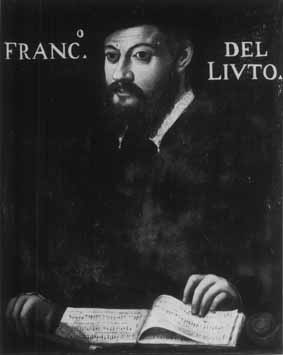

Italian lutenist; one of the great virtuoso performers of the sixteenth century. Served at the Gonzaga court in Mantua from about 1510, at the court of Cardinal Ippolito de' Medici from c1530, and lastly at the Papal court of Paul III. His fame was immense, his works were published throughout Europe, and he was designated "Il Divino" by his contemporaries, a title he shared with none other than Michelangelo Buonarroti. One hundred twenty-four of his works survive in the form of fantasies, ricercars, and intabulations of vocal music. His three volumes of lute pieces were very popular and contained intabulations of Janequin's La guerre and other programmatic pieces. Called Il divino, he entertained prelates and princes, often with improvisations. His ricercars are free studies in lute style, while his fantasias are contrapuntal and closer to organ music. In arranging vocal music, he applied brilliant trills, turns and runs to the model to produce a thoroughly idiomatic lute piece. Francesco was buried at the church of Santa Maria della Scala in Milan, which was destroyed in the second half of the eighteenth-century to make way for the construction of the La Scala Opera House. Among his disciples was Giovanni Maria da Crema.